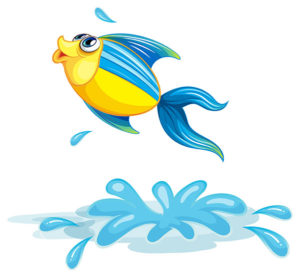Adsorbant

Overview :
Ammonia is the major waste product in the elimination of excess amino acids from the breakdown of proteins in fish. Gaseous ammonia is primarily released from the gills of Fish, Ammonia concentration is increased because of reduced algal population in the pond and due to reduced rate of assimilation of ammonia by plankton algae. Additionally, lower water temperature slows aerobic bacterial nitrification process whereby ammonia is converted to nitrates. High aquatic pH severely accounts for the enhanced aqua concentration of ammonia.
When fish is fed with high protein diet, they utilise the amino acids from protein digestion and excess amino acids are converted to ammonia which is excreted through the gills and in the faeces. The amount of ammonia excreted by fish varies with the amount of feed that is put into the pond or the species of fish being cultured and it increases with feeding rates. The primary site for ammonia production is the liver while excretion is through the kidneys.
Read More
In water, ammonia occurs in two forms represented as ammonium ions (NH 4 +) and unionised ammonia (NH3). Between the two forms, the unionized form (NH 3) is more poisonous to fish. Ammonia is acutely toxic to fish and can cause loss of equilibrium; increased breathing, cardiac output, and oxygen uptake, and in extreme cases; convulsions, coma and death. Fish exposed to low levels of ammonia, overtime, are more susceptible to bacterial infections and will not tolerate routine handling. The first signs of ammonia toxicity include slight restlessness, increased respiration and the fish The relative proportion of the two forms present in water is mainly affected by pH and temperature. Increasing both pH and temperature will increase the percentage of NH3. Un-ionized ammonia is the toxic form. It is 300 to 400 times more toxic than NH4. Ammonia is toxic to fish and other aquatic organisms in very low concentration, about 0.2 mg/L]. Ammonia at relatively low concentration can have negative effects on fish tissues such as gill damage and physiological factors such as poor growth, higher oxygen consumption and more susceptible to bacterial infections and can restrict yields in intensive fish culture. When ammonia accumulates to toxic levels, fish cannot extract energy from feed efficiently. When ammonia concentration gets high enough, the fish become lethargic and eventually fall into a coma and die. Ammonia nitrogen consists of ammonia (NH3) and ammonium (NH4 forms. The results usually are reported as total ammonia nitrogen (TAN) concentration, which means the concentration of nitrogen resulting from the nitrogen in ammonia (NH3-N) and ammonium (NH4+-N) combined. MOA The two forms of nitrogen exist in a pH and water temperature dependent equilibrium. NH3+ H+= NH4+ which may also be written as NH3+ H2O = NH4++ OH–. When the hydrogen ion (H+) concentration decreases, hydroxide ion (OH–) concentration and pH increase, and the ratio of ammonia ammonium increases, greater temperature increase also favours a larger proportion of ammonia. This proportion of ammonia total ammonia nitrogen is of importance in aquaculture, because ammonia is toxic while ammonium is not appreciably toxic. The combination of high pH and elevated total ammonia nitrogen concentration can lead to elevated ammonia concentrations potentially harmful to culture animals. Ammonia concentrations in aquaculture are likely to stress fish but seldom kill them. Shrimp tend to stay at the bottom of ponds where pH and temperature tend to be lower, but in well-mixed, aerated ponds, the pH and temperature near the bottom usually are about the same as in surface water.
